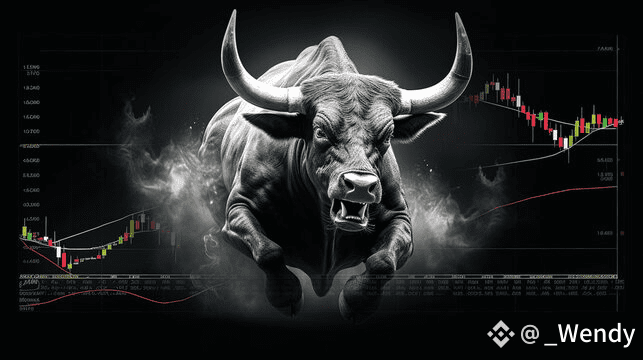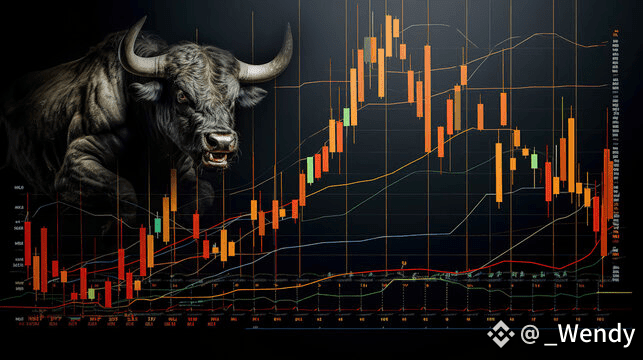It’s mid-July 2025, and the crypto market is roaring in a full-blown bull run. Bitcoin has skyrocketed past $126K, Ethereum is dancing around $3.2K, and altcoins like SOL, DOGE, and meme tokens like PENGU are stealing the show. But with every bull market comes the million-dollar question: When should you buy, take profits, or just hold on?
In this guide, we’ll break down a practical trading strategy to navigate this bull market like a pro. From understanding market psychology to spotting red flags, we’ve got you covered. Let’s dive in! 🚀
Understanding Bull Market Psychology
Bull markets are thrilling but tricky—they’re an emotional rollercoaster that can cloud your judgment. Here’s why timing is everything and how psychology plays a role:
Why Bull Markets Trigger Emotional Decision-Making: When prices soar, greed kicks in, and fear of missing out (FOMO) pushes traders to buy at peaks. Meanwhile, fear of losing gains can make you sell too early. Staying disciplined is key to avoiding these traps.
FOMO and How It Distorts Timing: FOMO makes you chase pumps (like PENGU’s 200% rally last week) without a plan, often leading to buying at tops. Counter it by sticking to data-driven entries and exits.
How Market Cycles Affect Trade Timing: Bull markets follow a flow: Bitcoin pumps first, then Ethereum, followed by large-cap altcoins (e.g., SOL), and finally meme coins (e.g., PENGU). Knowing this cycle helps you time trades—buy large-caps early, then rotate to smaller coins as momentum builds.

When to BUY: Entry Strategies That Work in Bull Runs
Catching the right entry points in a bull market can make or break your profits. Here are proven strategies to buy smart, backed by technical analysis:
Breakouts Above Resistance with Volume Confirmation: Look for coins breaking key resistance levels (e.g., SOL breaking $200) with a surge in trading volume. This confirms bullish momentum. Check volume spikes on Binance’s trading tools (binance.com/en/price).
Pullback Entries on 21 EMA and 50 EMA Support: Prices often retrace to the 21-day or 50-day Exponential Moving Average (EMA) before continuing upward. For example, ETH at $3.2K recently bounced off its 21 EMA ($3.1K). Use Binance charts to spot these levels.
RSI Between 50–60 = High-Probability Zone: The Relative Strength Index (RSI) between 50–60 signals a coin is gaining momentum without being overbought. Buy when RSI dips to this zone, like DOGE at 52 last week.
Using Bitcoin Dominance to Time Altcoin Buys: When Bitcoin Dominance (BTC.D) drops below 60% (currently 60.87%), altcoins often rally. Monitor BTC.D on TradingView or Binance to time entries for coins like SOL or PENGU.

When to TAKE PROFIT: Lock in Gains Before the Party Ends
Taking profits in a bull market is an art. Sell too early, you miss gains; sell too late, you risk a crash. Here’s how to do it right:
Set Profit Goals in Advance: Decide your target before entering a trade. For example, aim for 20–50% gains on altcoins like SOL or 100%+ on meme coins like PENGU. Use Binance’s price alerts to track targets.
Sell in Portions, Not All at Once: Sell 25–50% of your position at key resistance levels (e.g., ETH at $3.5K) to lock in profits while keeping some exposure for further upside.
Watch for Signs the Pump Is Slowing Down: Look for weakening momentum—divergences in RSI (price rises, RSI falls), lower highs, or fading volume. For example, PENGU’s volume dropped 15% despite a 30% price jump last week, hinting at a potential peak.
Use a “Safety Net” (Optional for Active Traders): Set trailing stop-losses (e.g., 5–10% below the current price) on Binance to automatically secure gains if prices reverse. This works great for volatile coins like DOGE.
When to HOLD: Know When to Stay Patient
Holding can be the best move in a bull market, but only for the right reasons. Here’s how to decide:
Long-Term Hold Signals:
ETF Inflows: Strong inflows into Bitcoin and Ethereum ETFs (up 25% in Q2 2025) signal institutional confidence, supporting long-term holds.
Roadmap Execution: Projects delivering on promises (e.g., SOL’s new DeFi integrations) are worth holding.
Staking Benefits: Coins like ETH or ADA offer 4–8% annual yields, making holding attractive.
Good Reasons to Hold: Strong tokenomics (e.g., limited supply), real-world utility (e.g., SOL’s DeFi ecosystem), or passive income from staking.
Bad Reasons to Hold: Hoping for a miracle, emotional attachment, or refusing to cut losses when you’re “down bad.” If a coin’s fundamentals weaken, don’t cling to it.
Red Flags You’re Holding Too Long
Holding isn’t always the answer. Watch for these warning signs to avoid bag-holding in a fading bull market:
Project Delays or Vague Updates: If a project (e.g., a new Layer-1 coin) misses roadmap deadlines or posts cryptic updates, it’s a red flag. Check X or project websites for transparency.
Social Sentiment Cooling Off: Fading buzz on X, Telegram, or Discord (e.g., fewer posts about PENGU) signals waning interest.
Decreasing Volume Despite Price Surge: Rising prices with falling volume (like SOL’s 10% volume drop last week) suggest a pump losing steam.
Loss of Community Engagement: If a project’s community shrinks or goes quiet (check X or Reddit), it may indicate declining trust.
Wrapping Up
The 2025 bull market is in full swing, with Bitcoin at $126K, Ethereum at $3.2K, and altcoins like SOL and PENGU making waves. By understanding bull market psychology, timing your buys with technical signals, taking profits strategically, and holding for the right reasons, you can maximize gains and avoid pitfalls.
Use Binance’s trading tools to track prices, set alerts, and execute trades. Stay sharp, watch for red flags, and trade smart
This article is for informational purposes only. The information provided is not investment advice

